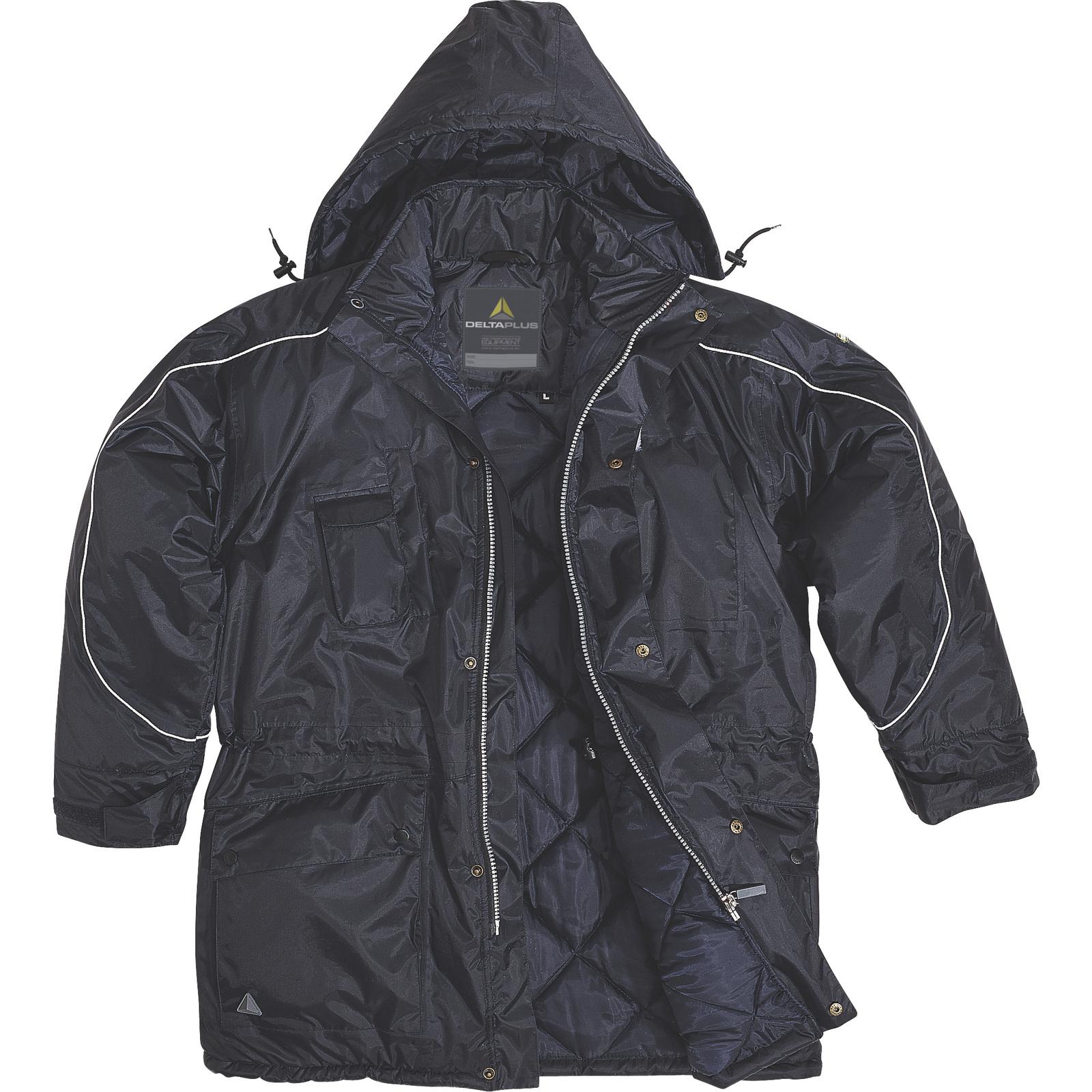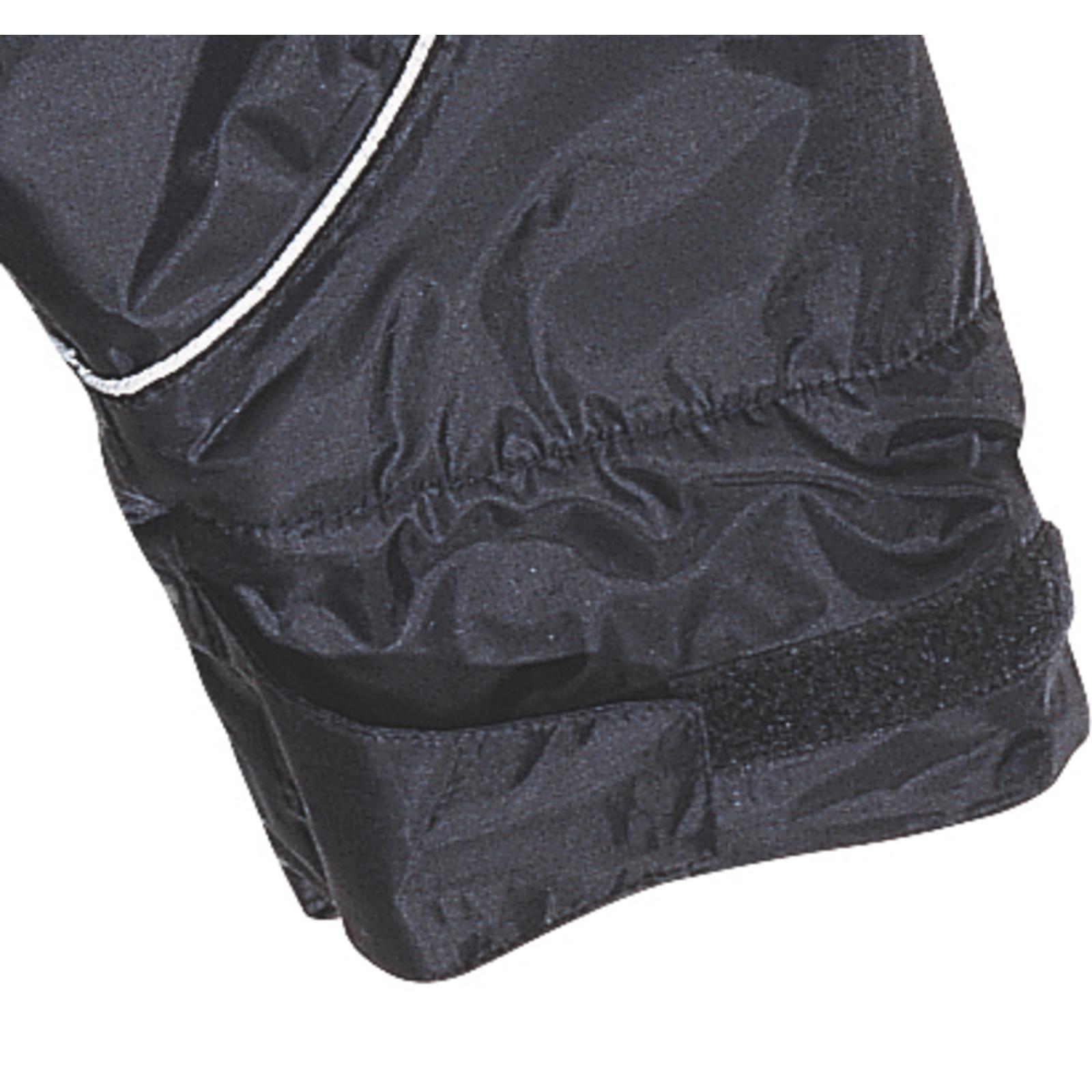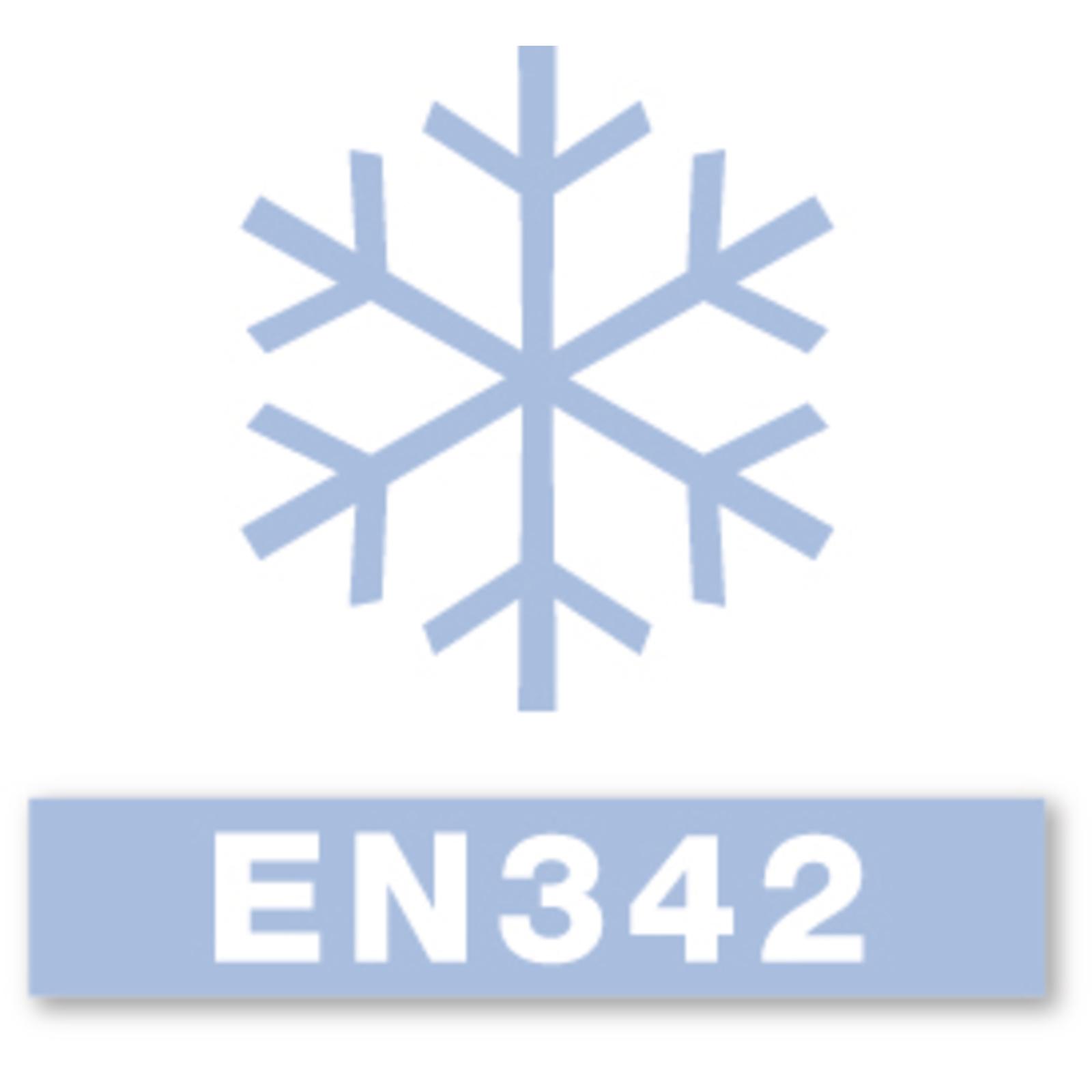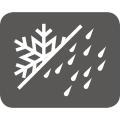The product complies with the European Directive 89/686, notably regarding ergonomics, innocuousness, comfort and with standards :
PVC-COATED POLYESTER PARKA – COLD PROTECTION -20°C
Parka. Waterproof seams. Fastening with zip under press studs storm flap. Adjustable cuffs with drawstring. 6 pockets.
PVC-coated polyester fabric.
Wadded polyester Taffeta lining.
15/02/16

Wadded removable hood

Wind proof knitted inside cuffs

Cold protection
| Reference |
pcb |
Colour |
Size |
| HELSIBMPT |
10 |
Navy blue |
S |
| HELSIBMTM |
10 |
Navy blue |
M |
| HELSIBMGT |
10 |
Navy blue |
L |
| HELSIBMXG |
10 |
Navy blue |
XL |
| HELSIBMXX |
10 |
Navy blue |
XXL |
| HELSIBM3X |
10 |
Navy blue |
3XL |
EN ISO 13688:2013 General requirements Reference standard, not for use alone, but only in association with another standard containing the protection performance requirements.
This standard specifies general performance requirements for ergonomics, innocuousness, size designation, durability, ageing, compatibility and marking of protective clothing and the information to be supplied by the manufacturer with the protective clothing.
EN342:2004 Protective clothing — Ensembles and garments for protection against cold - 0,321m².K/W (R) Icler - Resultant effective thermal insulation measured on a mobile model:
- X Resultant effective thermal insulation measured on a stationary model
- 3 Air permeability Class (1 to 3)
- 2 Class of resistance to water penetration (from 1 to 2)
This standard specifies the requirements and performance test methods for protective clothing against cold at temperatures lower than -5°C (cold store / extreme cold workers).
There are two types of garment:
– Garments: covering part of the body, e.g. parka, jacket, coat.
– Suits: covering the whole body (trunk + legs), e.g. coveralls, parka & dungarees.
EN343:2003 Protective garment against rain exposures - 3 Resistance of the Penetration of water (1 to 3)
- 1* Evaporative resistance (1 to 3)
This standard specifies the requirements and test methods applicable to the materials and seams of protective clothing against foul weather (for example precipitation in the form of rain or snow), fog and ground humidity.
• THERMAL RESISTANCE (Rct) IN M².K/W :
Measurement of the thermal insulation provided.
Divided into 3 classes (from 1 to 3) from the least insulating to the most insulating. The higher the value, the greater the thermal insulation.
• WATER VAPOUR RESISTANCE (Ret) IN (M².PA)/W :
Measures the evaporative resistance, i.e. the product’s obstacle to the passage of water vapour, or the barrier it offers to evaporation of transpiration on the surface of the skin. The higher a product’s water vapour resistance, the greater this product’s barrier to the passage of water vapour: A breathing product has a low water vapour resistance. Divided into 3 classes (from 1 to 3) from the least breathable to the most breathable.
• AIR PERMEABILITY (AP) IN mm/s :
Determines the complex’s permeability to air.
Divided into 3 classes (from 1 to 3) from the least airtight to the most airtight.
• RESISTANCE TO WATER PENETRATION (WP) IN PASCAL:
Measurement of the outer material and seams’ resistance to water penetration under a water pressure of (980+/-50) Pa/min.
Divided into 3 levels (1 to 3) from the least impermeable to the most impermeable.
• RESULTANT EFFECTIVE THERMAL INSULATION:
Measured on moving dummy (/cler) or on non moving dummy (/cle).
The thermal insulation coefficient, expressed in m2.K/W, is used to determine the optimum usage temperature of the garment in relation to the individual’s activity and his exposure time.
Thermal insulation is measured with undergarments of type :
– (B) for ensembles (Undershirt with long sleeves, long underpants, socks, bootee + thermojacket, thermopants, knitted gloves, balaclava).
– (R) for garments (Undershirt with long sleeves, long underpants, socks, bootees, jacket, trousers, shirt, knitted gloves, balaclava).
– (C) provided by the manufacturer.







